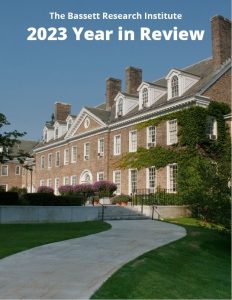The Bassett Research Institute conducts research to understand and improve the health and well-being of individuals and rural populations. We develop strategies to improve health care delivery, prevent illness, and manage chronic disease in support of the Bassett Healthcare Network’s mission.
Our Mission
Bassett’s Research Days Return This Spring!
Join Bassett Research Institute for their 2024 Research Days on Tuesday, April 23 and Wednesday, April 24 from 11 a.m. – 1 p.m. in Bassett Medical Center’s Clinic Lobby.
Our Goals
Improve the health of the rural communities served by the Bassett Healthcare Network
Study the function of Bassett Healthcare Network and other rural resources in the delivery of health services
Foster and support the research endeavors of Bassett Healthcare Network clinicians
Our Centers
The Bassett Research Institute is divided into individual centers who work collaboratively to achieve common goals. Our research centers work together to understand and serve the unique healthcare needs of a rural population, in conjunction with the greater Bassett Healthcare Network mission.
Community Health
Clinical Research

Join A Research or Study Program
Interested in participating in one of our research studies? View our list of current programs and see if you’re eligible.
Sign Up for a Wellness Class
Now’s the time to take your health in your hands! Sign up for one of our wellness classes today.
Latest News
January 15, 2024
Bassett Research Institute Receives Funding in Collaboration with Cornell University
November 14, 2023
Congratulations, Drs. Scribani and Pullyblank!
August 24, 2023
Thinking Globally with Sweden’s Umeå University
Our Year in Review
To find out more about the Bassett Research Institute (BRI) and the work we are doing to foster healthy rural communities, take a look at our latest Year in Review.


One Atwell Road
Cooperstown, NY 13326
607-547-3456
1-800-BASSETT (227-7388)
© 2023 Bassett Healthcare Network Research Institute

